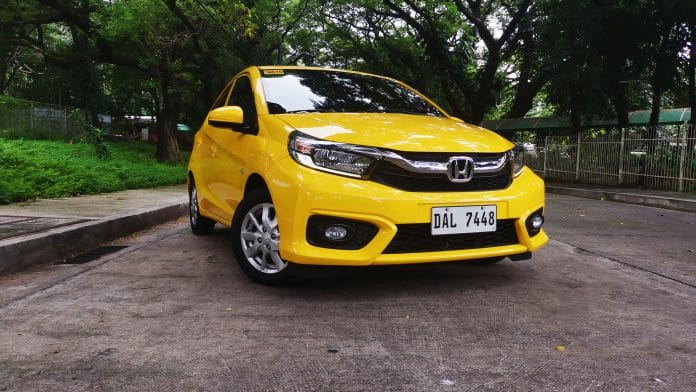Private transportation has become more crucial these days and with it came the demand for small cars once again. Their size makes them easier to drive and park, but their main hook is their attainable price. At around P600k, you already have a handful of options in the market and one of these is the Honda Brio V CVT.
The Honda Brio was launched in April last year and quickly climbed the ranks to become the brand’s third best-selling model just behind the City and BR-V. Since then, a few rivals have updated their entries in the category which led me to ask – does it still have what it takes to be a top-tier choice? I drove one to find out.
Exterior
The Brio is mature-looking unlike the rest in its class. It’s not too simple nor very sporty, but intimidating with its mean-looking halogen headlights, LED light guide, and subtle sculpting on the front bumper around the foglight. There’s a good balance between the chrome grille and the black honeycomb covers that emphasize its snobbish demeanor.
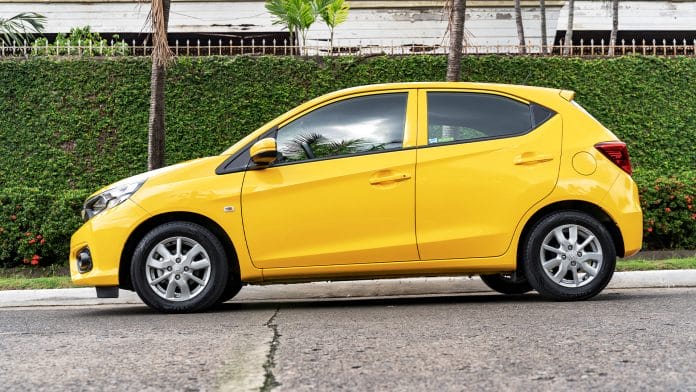
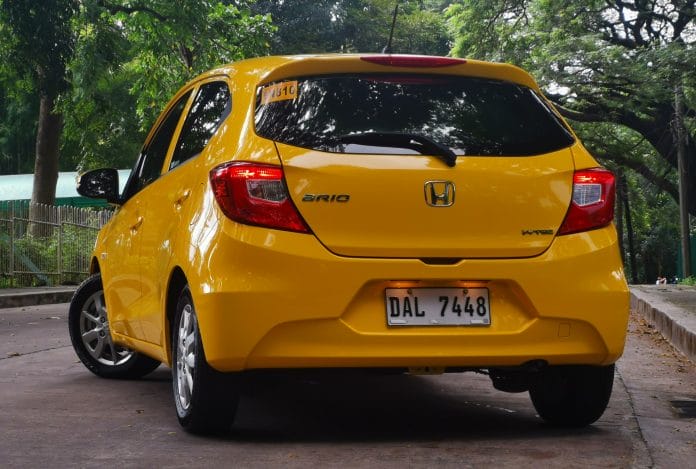
On the side are sleek lines that’s similar to the City and Jazz, with a small turn signal light by the front fender. The stock 14-inch wheels are underwhelming, considering the overall angas of the Brio’s body, but that’s easy to fix.
I especially like how they designed the rear of the car to make it like a proper hatch and not simply flat unlike the previous generation. The mold for the diffuser in the RS variant was also left vacant here in the V CVT, making it a bit more macho despite the simplicity. It’s also complemented well by the sharp taillights though they are not LED.
Interior
Inside, the dash looks like a miniaturized version of the BR-V and Mobilio’s, with only the steering wheel being different and the gauge cluster very simplified compared to its bigger brothers. Like the exterior, this gives the Brio a very mature aura compared to its rivals in its class.

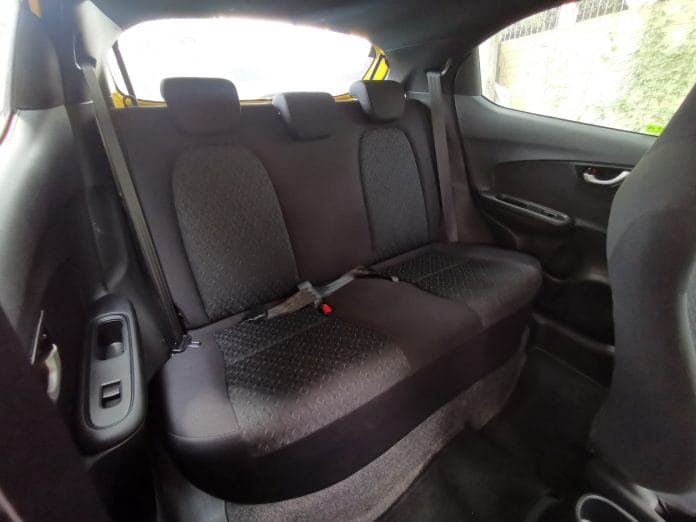
I’m a wide man of average height and I didn’t feel cramped inside the Brio. There’s generous elbow room in front, while at the back there’s ample elbow, head, and leg room. This will be the case for the average Filipino passenger 5’6 and below but those a few inches taller can still find this comfortable.
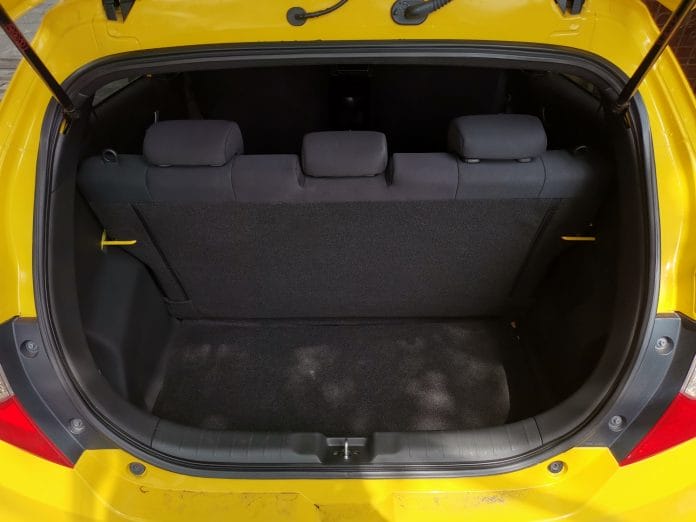
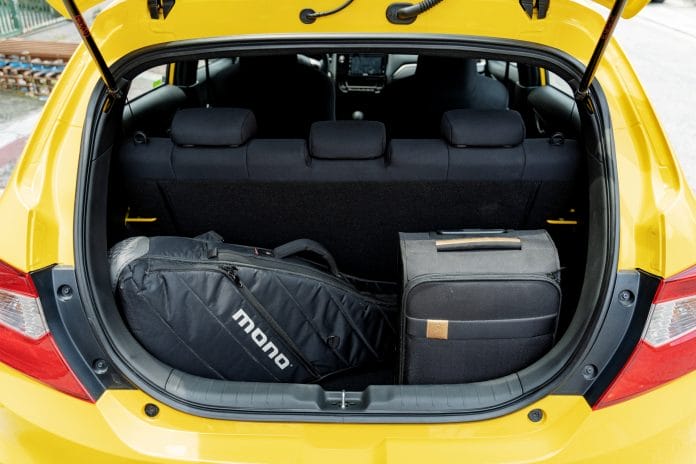
At the back, there’s space to take in 258 liters of luggage, or in my case, a standard guitar gigbag and a standard-sized suitcase. Guitar hardcases and bass gigbags won’t fit inside for those who play like me. But if you’re riding solo, you can fold the rear seats down and you’ll have space to take in 710 liters of cargo. I will miss the tonneau cover though because I use it as a makeshift table when hanging out during road trips.
Technology and safety
There’s not much things to play around with at this price point, but the Brio V gets basic modernities inside. The aircon has analog buttons with a digital display and above it is a 7-inch touchscreen with Bluetooth.
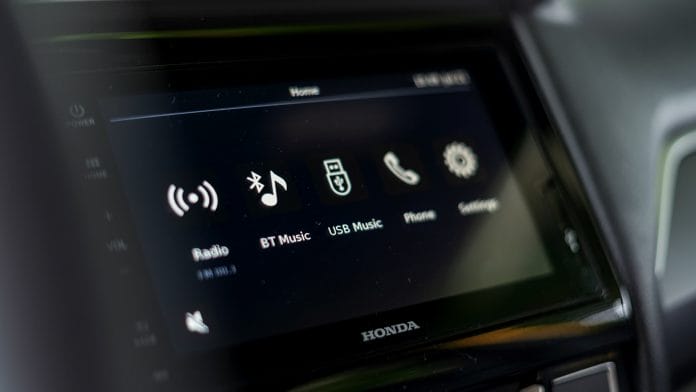
I could’ve given it a pass despite not having Android Auto or Apple CarPlay, but the system is buggy half the time. If it reconnects to your phone, there’s a chance you can’t resume your playback immediately. Then if you skip too many songs, it would simply stop playing. It’s irritating if you’re in the mood for specific songs and I haven’t found a fix for that.
Other tech includes remote key, ABS, front airbags, alarm, immobilizer, and speed-sensing door locks. It also unlocks upon shifting to Park, which is an added perk for some but is a safety concern for me, no thanks to lots of sketchy areas in the city.
There are no rear sensors, which its rivals have, and it doesn’t have a one-touch lane changer. This is the feature where you half-press the turn signal stem so your lights will blink around three times, just enough for a lane change. These two misses are small things to be honest since there’s still that option to fully activate the turn signal, and the Brio’s size and hatchback nature isn’t hard to park. However, if more affordable models like the Suzuki Celerio have those, it’s a bit of a concern that this Brio V doesn’t.
Driving and handling
Under the hood of the Brio is the most powerful engine in its class – a 1.2L SOHC i-VTEC that puts out 88hp (or 90ps for you modern car fans) and 110Nm of torque. Combine that with a car that only weighs 969kg, and it results in a pretty zippy drive. I brought it to the curves leading to Timberland in San Mateo, Rizal and it’s the best drive I’ve had during this pandemic. The steering’s responsiveness and the car’s overall nimbleness made the short climb a lot of fun.
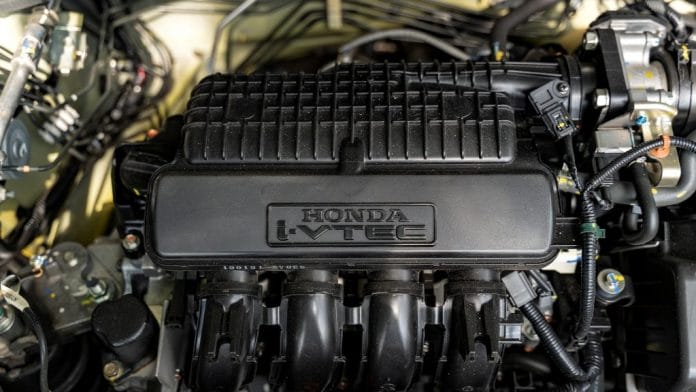
The 1.2L i-VTEC is paired to a CVT which is a good or bad thing depending on how you look at it. The rubber band effect that’s attributed to most CVTs is very apparent with the Brio, but it’s this characteristic that give it a smooth drive. Even if I step on the gas in a panic because I didn’t notice the stoplight turned green, I won’t be pushed back in my seat from the sudden surge of power. Moderate stop and go traffic is also a breeze since shifting from brake to gas results in a smooth transition and not jarring. Overtaking might be an issue when the car is full but if you’re just 2 to 3 people inside without any baggage, it can still get the job done satisfyingly.
Fuel consumption
Despite the slightly bigger engine, I still expected good numbers from the Brio V especially because of its CVT. Driving it in moderate to light traffic in the city, and climbing up San Mateo, Rizal, it still managed a good 9.7km/l. That also includes long idle moments with the car on, thinking where to drive next.
Verdict
At P658,000 the Honda Brio V CVT should’ve been smooth sailing. It has great space, a bigger engine, and on-point styling that I’m certain will take a while before it looks dated. However, if you’re particular about the features you’re getting at this price point, it would be understandable if you raise your eyebrow for a while. But if you can give it a pass for those relatively minor misses, you’re in for a treat.
The Honda Brio is for those who want the small thrills in driving – starting from the front row before a stop light, the light traffic after passing Ortigas flyover southbound, going down the speed ramp of Trinoma’s Mindanao parking – the Brio makes these small moments that much more fun. Any car can take you from point A to B, but the Brio can do the same thing and you’ll leave it with a smile on your face.
